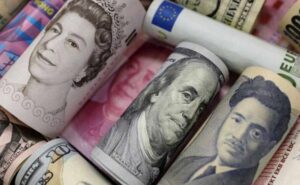
The US dollar rate was changing little against the euro and the pound during the Wednesday morning session, but demonstrated a considerable rise against the yen amid increasing US government bond yields.
The ICE-calculated index showing the U.S. dollar’s performance against six currencies (euro, Swiss franc, yen, Canadian dollar, pound sterling and Swedish krona) is up 0.1%, as is the broader WSJ Dollar Index.
The dollar/yen exchange rate is up 0.4 percent at 134.08 yen as of 7:48 a.m. ksk, up from 133.50 yen at the end of last session.
The yield on 10-year U.S. government bonds on Wednesday morning is about 3.85%, the highest since early November. The rise in yields is due to fears that China’s successive easing of anti-coverage restrictions could intensify global inflationary pressures, Trading Economics writes.
The dollar also continues to receive support from the Federal Reserve’s (Fed) hawkish mood. The Fed expects to raise its key interest rate to 5-5.25% over the next year and hold it at that level until at least early 2024 to return inflation to its 2% target.
The U.S. rate now stands at 4.25-4.5%, meaning the Fed plans three more hikes of 25 basis points. Many market participants expected the final rate level to be lower and were hoping for a reversal in the Fed’s monetary policy and a rate cut at some point next year.
The euro/dollar pair is trading at $1.0645 versus $1.0642 at the close of Tuesday’s session.
The pound sterling is losing less than 0.1% and is trading at $1.2026 versus $1.2031 the day before.
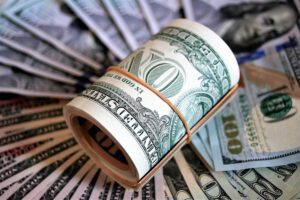
The U.S. dollar is getting cheaper against the euro, is stable against the pound and getting stronger against the yen.
Traders are focusing on the November U.S. Commerce Department report on Americans’ income and spending, which includes the dynamics of the Consumer Price Index (PCE and Core PCE) closely monitored by the Federal Reserve (Fed).
The Core PCE core inflation index, which excludes changes in food and energy prices, rose 0.2 percent in November from the previous month, the same as in October, experts polled by Dow Jones and The Wall Street Journal predicted. In annual terms, the index increase is expected to slow to 4.6% from 5% a month earlier.
On the eve of the U.S. Department of Commerce significantly improved its estimate of U.S. GDP growth in the third quarter – up to 3.2% in annualized terms from the previously announced 2.9%. This supported the dollar as traders took it as a signal that the Fed will raise the rate higher than expected to curb economic activity and inflationary pressures, Trading Economics said.
The euro/dollar pair was trading at $1.0610 as of 7:50 a.m. Friday versus $1.0598 at the close of the previous session.
The pound to dollar rate was at $1.2043 against $1.2045 the day before.
The value of the U.S. currency in a pair with the yen rose to 132.69 yen against 132.35 yen in previous trading.
Statistics from Japan, released on Friday, showed an acceleration in overall inflation in the country in November to 3.8% on an annualized basis – the highest since January 1991.
Consumer prices excluding fresh food (a key indicator tracked by the Bank of Japan) rose 3.7% year on year last month after climbing 3.6% in September. The rate of growth was the fastest since December 1981. In doing so, the figure exceeded the country’s central bank’s 2% target for the eighth month in a row.
The ICE-calculated index showing the dollar’s performance against six currencies (euro, Swiss franc, yen, Canadian dollar, pound sterling and Swedish krona) lost 0.06% in trading, while the broader WSJ Dollar Index lost 0.02%.
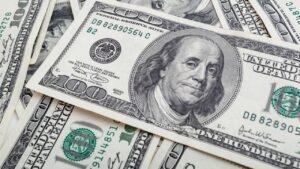
The U.S. dollar is strengthening moderately against major world currencies on Wednesday morning after a sharp decline the day before, caused by the decisions of the Bank of Japan.
The index calculated by ICE, which shows the U.S. dollar dynamics against six currencies (euro, Swiss franc, yen, Canadian dollar, pound sterling and the Swedish krona) is rising by 0.13% after a 0.6% decline on Tuesday.
The euro/dollar pair is trading at $1.0616 by 9:04 a.m. Moscow time, versus $1.0625 at the close of Tuesday’s session; the euro is down about 0.1%.
The dollar/yen exchange rate rose 0.3 percent to 132.15 yen from 131.70 yen at the end of last session.
The day before the yen soared against the dollar by more than 3% after the Bank of Japan on the results of the December meeting unexpectedly decided to expand the corridor within which the yield of ten-year government bonds may fluctuate to plus/minus 0.5% from plus/minus 0.25% previously.
Many economists saw this move as laying the groundwork for an exit from the long-standing ultra-soft monetary policy (TFP).
The pound is losing 0.2% and is trading at $1.2164 versus $1.2184 at the end of last week.
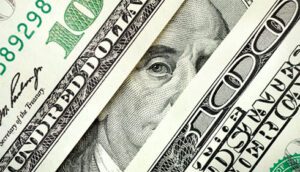
The U.S. dollar is getting cheaper against the euro, the yen and the pound sterling in trading on Monday.
The ICE-calculated index showing the dollar’s dynamics against six currencies (euro, Swiss franc, yen, Canadian dollar, pound sterling and Swedish krona) lost 0.12% in trading, while the broader WSJ Dollar Index lost 0.21%.
The euro/dollar pair is trading at $1.0606, up from $1.0587 at the close of the previous session. The pound rose to $1.2175 versus $1.2141 at the close of trading on Friday.
Traders continue to follow the statements of the representatives of the Federal Reserve System (FRS) and wait for the next statistical data on the American economy.
This week, the U.S. Commerce Department will release final data on the country’s GDP dynamics in the third quarter. Experts polled by Trading Economics do not expect to revise their estimate of GDP growth from the previously announced 2.9%.
Federal Reserve Bank of New York (FRB) President John Williams told Bloomberg on Friday that the U.S. central bank will raise rates as high as necessary to bring “stubbornly high” inflation under control.
According to Williams, for the Fed’s actions to be successful, the rate will have to exceed the U.S. inflation rate at some point. At the same time, he noted that he does not expect it to rise to 6% (the October rate of growth of the PCE consumer price index), but rather expects inflation to slow down.
Mary Daley, president of the San Francisco Fed, still believes that the Fed is a long way from meeting the goal of substantially lowering the rate of inflation in the U.S.
“We still have a long way to go,” Daley said at an American Enterprise Institute event Friday. – We’re a long way from our goal of achieving price stability.”
The yen rose Monday on a Kyodo report that the Japanese government and the country’s central bank may revise its approach to the inflation target, making it more flexible. Japanese authorities are currently aiming for a 2% inflation target “as soon as possible.”
A more flexible wording of the inflation target would pave the way for the Japanese central bank to tighten monetary policy, Bloomberg notes.
Kyodo report, however, was refuted by Japan’s Cabinet Secretary General Hirukazu Matsuno, who said there are no plans to change the government’s approach to inflation target. According to Matsuno, he hopes that the Bank of Japan will continue its policy moving toward the inflation target.
The Bank of Japan will hold a two-day meeting Dec. 19-20 to decide on key parameters of its policy in the near future.
The dollar-yen exchange rate fell to 136.09 yen from 136.7 yen at market close on Friday.
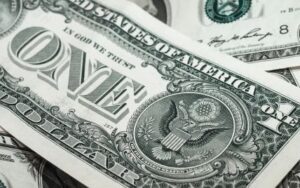
The U.S. dollar is falling against the euro, yen and pound in trading on Friday.
The euro/dollar pair is trading at $1.0647 as of 8:07 a.m. KSC on Friday, down from $1.0629 at the close of the previous session.
The pound is trading at $1.2204 by that time against $1.2179 the day before.
The cost of dollar in pair with the yen decreased to 137.25 yen, compared to 137.77 yen at the end of previous trades.
The ICE index showing the dollar’s movement against six currencies (euro, Swiss franc, yen, Canadian dollar, pound sterling and the Swedish krona) was losing 0.17%, while the broader WSJ Dollar Index lost 0.23%.
Traders continue to assess the outcome of meetings of the world’s major central banks.
The U.S. Federal Reserve (Fed) on Wednesday expectedly raised its key rate by 50 basis points, and central bank leaders revised upward their forecast for the rate level by the end of 2023. According to the new forecast, the rate will peak at 5-5.25%.
In addition, during the traditional press conference, Fed Chairman Jerome Powell repeatedly hinted that the Fed does not intend to proceed with rate cuts until at least early 2024.
On Thursday, the European Central Bank and the Bank of England followed suit and also raised their rates by 50bp.
Investors also analyze the statistical data published the day before from the USA that showed a bigger-than-expected decline of retail sales and an unexpected drop of industrial production in November.
U.S. retail sales in November decreased by 0.6% compared to the previous month, said the U.S. Department of Commerce. It’s the biggest drop since the beginning of the year, Trading Economics noted.
Analysts polled by Bloomberg had expected a decline of 0.2%, while Trading Economics had forecast a 0.1% decline.
Industrial production in the U.S. in November decreased by 0.2% compared with the previous month, while analysts had expected growth of 0.1%. In annual terms industrial production increased by 2.5%.
The statistical data that did not meet expectations increased fears that the Fed’s tight monetary policy could already begin to exert downward pressure on the economy, Trading Economics wrote.

The U.S. dollar is stable against the euro in trading on Friday, getting stronger against the pound and cheaper against the yen.
Traders will focus on the U.S. labor market report for November, which will be released at 3:30 p.m. Ksk.
The consensus forecast of experts polled by Trading Economics expects the number of jobs in the U.S. economy to increase by 200,000 in November and unemployment to remain at 3.7%.
The November labor market report is important to the Federal Reserve (Fed), which will hold its next meeting on December 13-14. Judging by futures quotations for the prime rate, the market expects the Fed to raise it by 50 bps. – to 4.25-4.5% per annum.
A new dot plot of forecasts will also be published at the end of the December meeting, reflecting the individual expectations of the members of the Federal Reserve Board of Governors and the heads of the Federal Reserve Banks with regard to interest rates.
Earlier this week, U.S. Central Bank Chairman Jerome Powell confirmed that the Fed could slow its rate hike as early as December.
Fed Vice Chairman of Banking Supervision Michael Barr on Thursday also argued in favor of a slower rate hike.
“We’ve been moving very, very quickly toward a rate level that would limit economic activity, and now that we’re very close to it, I think it makes sense to slow the pace of the hike,” Market Watch quoted Barr as saying.
The euro/dollar pair was trading at $1.0529 as of 8:20 a.m. Ksk Friday, up from $1.0527 at the close of the previous session. The pound fell to $1.2239, compared to $1.2256 at the close of trading on Thursday.
The dollar-yen exchange rate declined to 135.08 yen in trading, compared to 135.34 yen at the close of the previous session.
The ICE-calculated index showing the dollar’s dynamics against six currencies (euro, Swiss franc, yen, Canadian dollar, pound sterling and the Swedish krona) lost 0.01% on Friday, while the broader WSJ Dollar Index lost 0.04%.